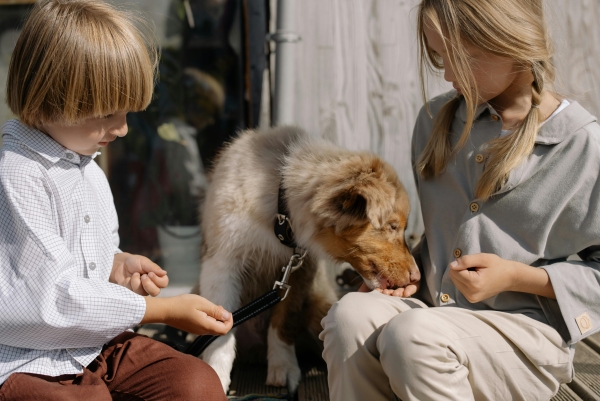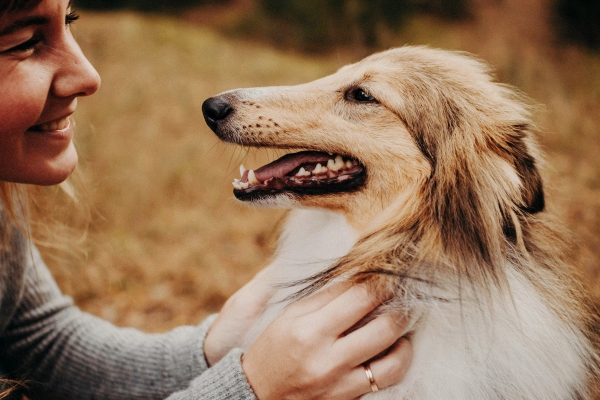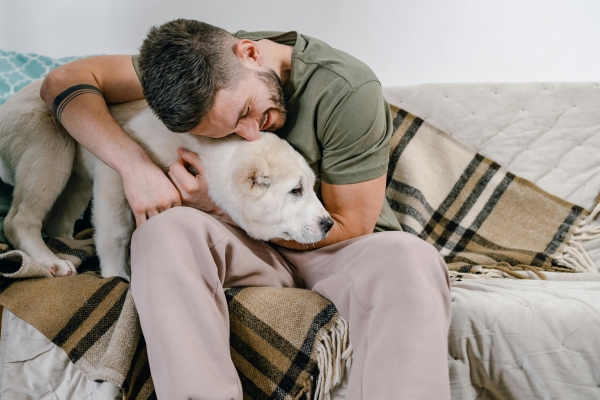8 Tips for Feeding Your Senior Dog
As your dog enters their senior years, some changes are inevitable. While they will always be your best friend and the vacuum cleaner will remain their number one enemy, their health needs will evolve just like ours do. One major aspect pet owners need to pay attention to is their dog’s diet and nutrition. We consulted experts to learn what to look for when choosing high-quality senior dog food and how to adjust your senior dog’s diet. As always, consult your veterinarian before making any changes to your pet’s diet—every dog is unique.
Address Any Dental Issues
If you notice your senior dog struggling with dry kibble, you might wonder what to feed a picky senior dog. However, this might not be a dietary issue at all. Dental disease and tooth pain can be the culprits behind a senior dog’s reluctance to eat. While switching to soft food might seem helpful, it’s crucial to address the root cause. Dr. Heather Frankfurt, a veterinarian in Texas, points out, “Proper dental care can significantly improve a senior dog’s quality of life. Imagine having tooth pain for years or having multiple painful teeth!”
However, if your dog stops eating entirely, dental issues alone might not be the cause. Frankfurt notes that most pets will find a way to eat despite tooth pain. For any changes in eating habits, a vet visit is essential.
Add Joint Supplements
Just like elderly humans, your dog is at risk of developing arthritis and joint pain. While many commercial dog foods include ingredients that support joint health, additional supplements might be necessary. Frankfurt recommends joint supplements for dogs over seven years old; for larger breeds, the age might be even younger. “There are many brands and types of joint supplements, which can be confusing,” she says. “Look for products containing MSM, chondroitin, and glucosamine—these ingredients work together to promote joint health.”
Increase Antioxidants
Wondering what the best diet for a senior dog is? Consider one rich in antioxidants. These are celebrated for their ability to combat disease and the effects of aging. They’re common in trendy juice bars, and under a vet’s guidance, they can be a healthy addition to your dog’s bowl too. “If they show signs of aging, I generally recommend antioxidants,” says veterinary nutritionist Dr. Susan G. Wynn. “One of the best ways is through fruits and vegetables, but some dogs can’t tolerate them or refuse to eat them. In such cases, I prescribe a combination of antioxidants in capsule form.” If your dog is willing, consider adding berries, turmeric, and dark leafy greens to their diet.
Incorporate Omega-3s
Omega-3 fatty acids are known to boost the immune system and reduce inflammation, benefiting both you and your senior dog. To reap the benefits, consider adding fish to your senior dog’s food. “Senior pets need higher levels of Omega-3s for brain and heart health,” says certified food therapist Dr. Judy Morgan. “I use sardines because larger fish tend to have higher heavy metal contamination.” Fish oil supplements are another option to increase Omega-3s in your senior dog’s diet. However, it’s possible to overdo fatty acids, so always consult your vet.
Monitor Weight
Maintaining a healthy weight is crucial at any age. For senior dogs, whose activity levels often decrease, it’s especially important to watch their weight—extra pounds can be just as harmful to pets as they are to humans. “It’s so easy to give a few extra treats or add a bit more food to the bowl—food makes our pets so happy,” Frankfurt says. “However, I take obesity very seriously due to the burden it places on our pets’ bodies.”
So, what can you do? Start with the basics, says Frankfurt. Accurately measure the food you give at each meal and never let your dog free-feed—keeping a bowl full of food is a fast track to obesity. Instead, feed your pet at fixed times at least twice a day to keep them satisfied. If they eat too quickly, consider using a “slow feeder” or food puzzle to extend mealtime and maximize enjoyment.
Choose Healthier Treats
Your dog loves treats, and you love giving them. But commercial treats can be calorie bombs that derail your efforts to manage your dog’s diet. Fresh fruits and vegetables can be just as rewarding—your dog just needs to get used to seeing them as treats.
“I always recommend introducing vegetables and fruits to pets as early as possible,” says Dr. Wynn. “They are the healthiest treats we can use. If you teach your dog early that vegetables are good, then vegetables become treats for them.”
For simple rewards, consider small apple slices (seedless), pear slices, blueberries, baby carrots, or even frozen green beans as a refreshing snack.
Consider Low-Calorie Dog Food
If you’ve ever been on a diet, you know how it works—a big bowl of leafy greens is more filling than a small serving of fries. When managing your dog’s weight, switch to a low-calorie dog food filled with healthy, low-calorie fibers. “This way, they can still consume almost the same amount of dog food but with a lower calorie density,” says Frankfurt. Senior dog foods available on the market often have a lower calorie density while containing higher levels of antioxidants, Omega-3s, and other beneficial ingredients for aging pets. As always, consult your vet before making any dietary changes for your canine companion.
Check the Food Bowl
When was the last time you bought a new food bowl? Was it when your dog was a puppy? If so, it might be time to upgrade to bowls better suited for their senior years. For dogs with joint issues, Frankfurt suggests using elevated bowls to reduce the need to bend down, making mealtime as comfortable as possible. While you’re at it, remember to put these bowls in the dishwasher—it’s an often-overlooked chore.
By following these tips, you can better care for your senior dog, ensuring they stay healthy and happy in their golden years.





